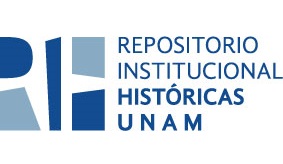Buscar
Mostrando ítems 1-10 de 70
Artículo
El náhuatl de la Crónica mexicana
(Instituto de Investigaciones Históricas, Universidad Nacional Autónoma de México, 2018)
The Crónica mexicana was supposedly written by Fernando Alvarado Tezozómoc in Spanish, around 1598. It tells the story of the Mexica from their departure from Aztlan until the arrival of the Spaniards. The text of the ...
Artículo
¿Religión o religiones mesoamericanas?
(Instituto de Investigaciones Históricas, Universidad Nacional Autónoma de México, 2018)
In this classic essay, Alfonso Caso reflects on the complexity of the Mesoamerican religious system. He challenges the notion of a unified "Mesoamerican religion" and instead proposes speaking of “Mesoamerican religions”, ...
Artículo
¿Por qué los topónimos México y Chapultepec tienen acento en la primera y en la última sílaba?
(Instituto de Investigaciones Históricas, Universidad Nacional Autónoma de México, 2018)
According to grammars from the 16th and 17th Centuries no syllable in Nauatl words was pronounced more forcefully than other syllables in the same word. However, speakers of Nauatl differentiated long vowels from short ...
Artículo
La fluidez del género en el tlacauhtli: el Mapa de Cholula de 1581
(Instituto de Investigaciones Históricas, Universidad Nacional Autónoma de México, 2018)
The configuration of “what surround us”, conceptualized as “space” in Western thought, is conceived differently in the Nahua system of thinking under the idea of tlacauhtli. A characteristic of tlacauhtli is to be constructed ...
Artículo
Atravesando los portales: telas, libros y procedimientos adivinatorios en el México central prehispánico
(Instituto de Investigaciones Históricas, Universidad Nacional Autónoma de México, 2018)
The aim of this article is to contribute to the understanding of how calendrical-religious codices were used as divinatory instruments, along with other procedures that fulfilled the same function, among them, the divination ...
Artículo
Passing On: The Cuernavacan Testaments of Don Juan Ximénez, His Daughter, Doña María Ximénez, Don Toribio Cortés, and Juan Bautista
(Instituto de Investigaciones Históricas, Universidad Nacional Autónoma de México, 2018)
Large numbers of Nahua men and women left testaments in which they passed on material objects, land, and, inadvertently, other kinds of cultural and historical bequests. All of this is certainly true of the four wills that ...
Artículo
Tlaxilacalli y altepetl en el Acolhuacan central, siglos XIV-XVII
(Instituto de Investigaciones Históricas, Universidad Nacional Autónoma de México, 2018)
Tlaxilacalli are one of the most important institutions in Mesoamerican history from the Postclassic until, at least, the mature colonial period. Nevertheless, despite their strong presence in documentary sources and their ...
Artículo
Fray Diego Durán, Libro de los ritos, edición y estudio de Paloma Vargas Montes, México, El Colegio de México, 2018
(Instituto de Investigaciones Históricas, Universidad Nacional Autónoma de México, 2018)
The review discusses the critical edition of Fray Diego Durán’s 'Libro de los ritos' by Paloma Vargas Montes. It examines the author's life, the manuscript's creation process, textual transmission, and Durán's ethnographic ...
Artículo
La polisemia de xihuitl. Un ejercicio de análisis cognitivo
(Instituto de Investigaciones Históricas, Universidad Nacional Autónoma de México, 2018)
The Nahuatl word xihuitl offers a case study of lexical polysemy. It has four meanings, “grass”, “year”, “turquoise” and “comet”, and a greater number if we consider its form xiuh- used in composition with other words. In ...
Artículo
Erótica náhuatl, compilación y traducción de Miguel León-Portilla, gra-bados de Joel Rendón, edición de Margarita de Orellana, México, Artes de México/El Colegio Nacional, 2018
(Instituto de Investigaciones Históricas, Universidad Nacional Autónoma de México, 2018)
The review analyzes 'Erótica náhuatl', a bilingual compilation by Miguel León-Portilla with illustrations by Joel Rendón. It reflects on sensuality and eroticism in Nahua culture through poetic and mythological texts, ...












